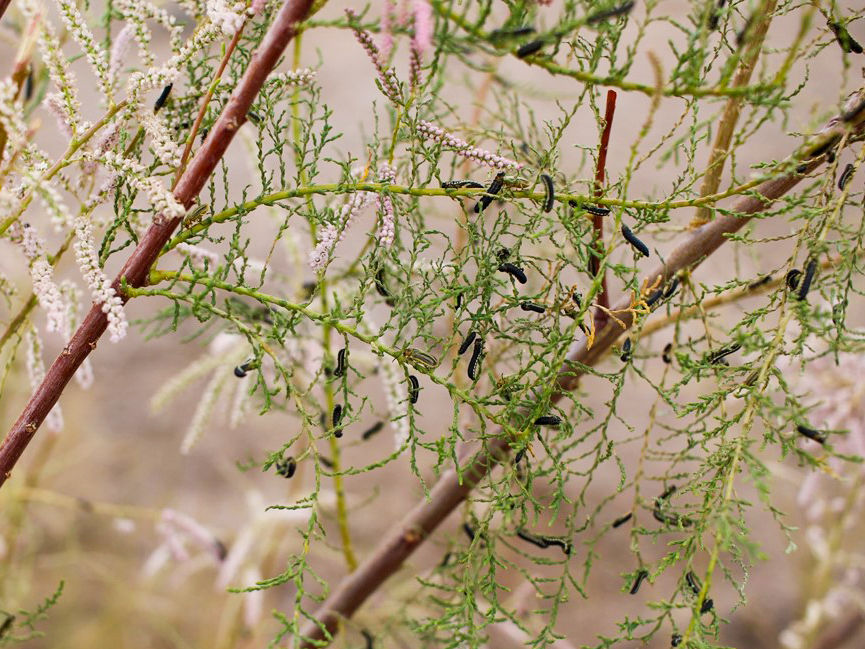New Mexico State University’s Assistant Professor of weed science Erik Lehnhoff and Extension Entomologist Carol Sutherland are getting closer to seeing if saltcedar beetles would lessen the inputs of time, labor, fuel and herbicides it takes to control saltcedar plants.
Saltcedar is an invasive, exotic shrub-tree initially introduced into the U.S. as an ornamental and later as a soil stabilizer for agricultural lands along rivers and other running water. But saltcedar quickly escaped cultivation and made a home wherever enough water could be found. It then began degrading the soil where it grew with its seasonal loss of salt-rich foliage. Found close to reservoirs, saltcedar hinders the movement of wildlife and grazing livestock and it wastes water.
So, Lehnhoff and his team began their research in 2016 with the help of the Western Integrated Pest Management Center in California, which provided them with $30,000 in grant money. The research would determine whether saltcedar beetles could be integrated with traditional saltcedar controls such as herbicides and mowing.
“Mowing will stress plants because they have to regrow after being mowed. Herbicides will kill the plants, but you have to get really good coverage on saltcedar to kill it. The beetles don’t kill saltcedar in the short term, but in combination with herbicide and or the mowing, they may,” Lehnhoff said.
After years of laboratory testing and observation, four species of saltcedar beetles were introduced to South Central and Southwestern parts of the United States beginning in the mid-2000s. The different species originated in north Africa, southern Europe, southwest Asia and northeast China. In the last couple of years saltcedar beetles, originally from Tunisi in north Africa, made their way north to Caballo Reservoir from the Big Bend area of west Texas.
“When the migration happened, we started to ask the question, can we combine the beetles with mowing and herbicide and see an even better control method?” Lehnhoff said.
Sutherland, who has been following the movement of the beetles for several years, said the beetles have several advantages: they reproduce by themselves, they survive the winter, they don’t cost anything, plus adults are highly mobile and excellent at finding their host even in remote locations.
“What’s nice about the beetles is once they are established they can move into an area for free and do all the work for free. They can get into places that we can’t like behind fences. So, if they can control the slat cedar it will allow other plants to prosper,” Sutherland said.
Saltcedar beetles in the larvae stage feed on the leaves of the tree causing damage and making the tree prematurely lose them. Photosynthesize does not happen and the tree begins to regrow leaves, taking energy the plant has stored.
“If the new leaves are also damaged by the beetles or larvae the plant is further weakened. Over several growing seasons, the plants may die if repeatedly attacked,” Lehnhoff said.
The saltcedar regrows and the beetles return later again to start the process over. Five to seven generations of beetles can be seen in a year alone. Lehnhoff said this process really stresses the saltcedar.
“It is this combination that is working the best together. So, with the mowing, herbicides and the beetles we stress the saltcedar through the year so they don’t grow back as fast and use as much water,” Lehnhoff said.
It is still unknown how long it will take the saltcedar beetles to fully control the saltcedar plants, but damage is definitely being done.
“We are watching to see what happens. General guesstimates are seven to eight years or a little longer, but we are dealing with living things, we must be patient and watch to see what happens over time. The beetles will not eradicate saltcedar, but they should suppress it and hopefully aid in management,” Sutherland said.



